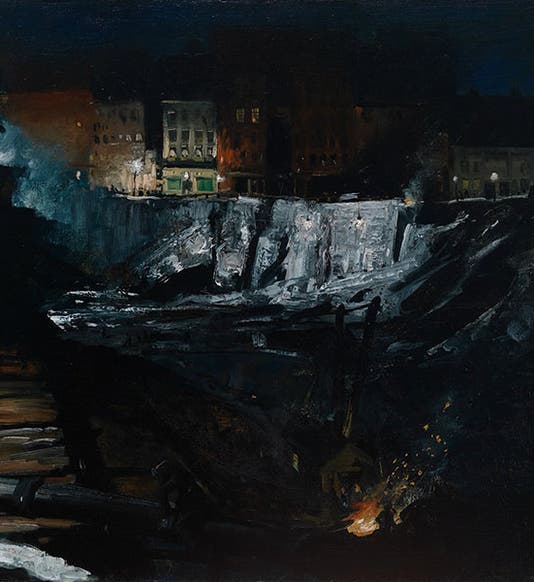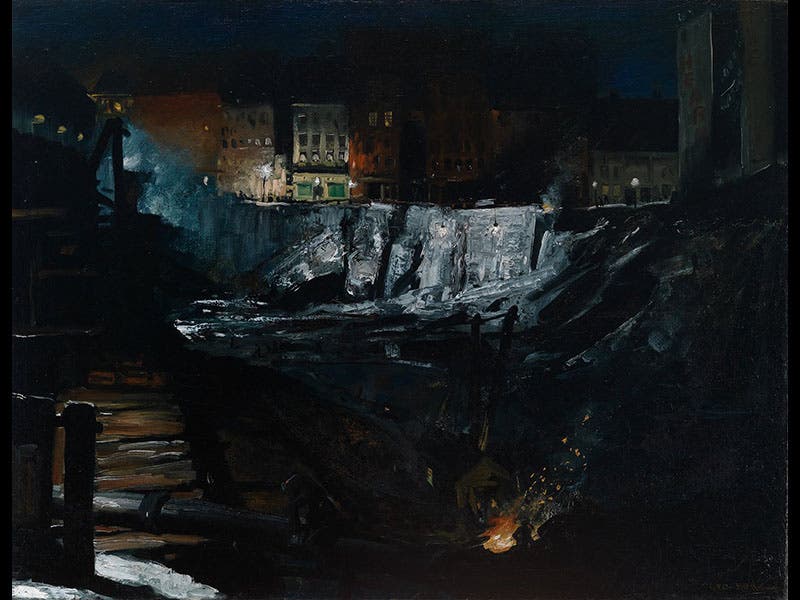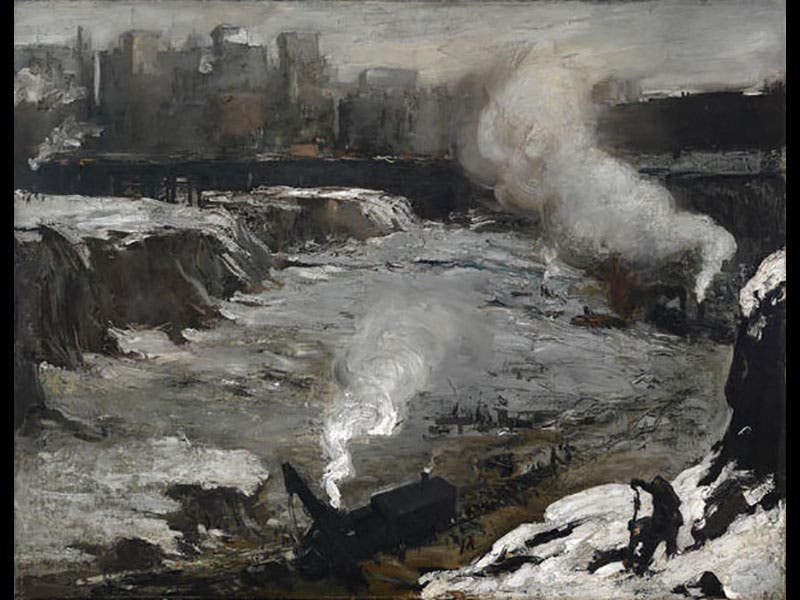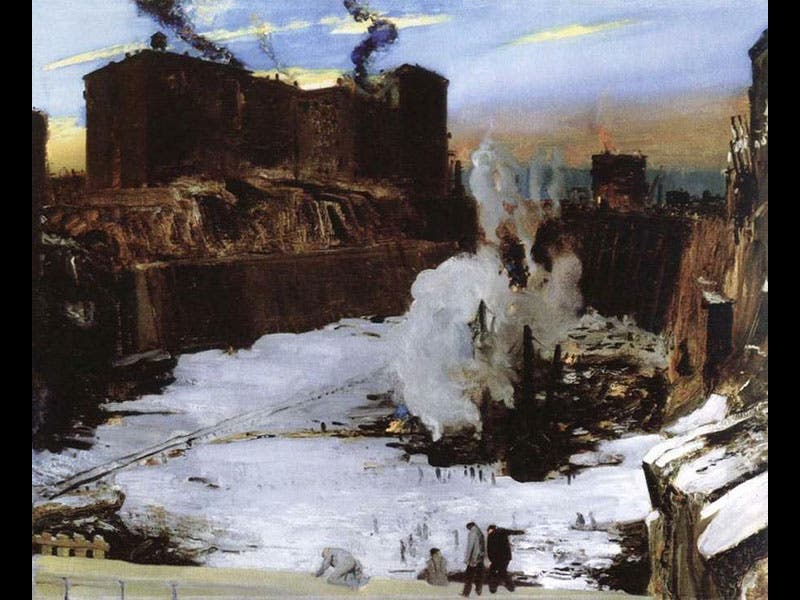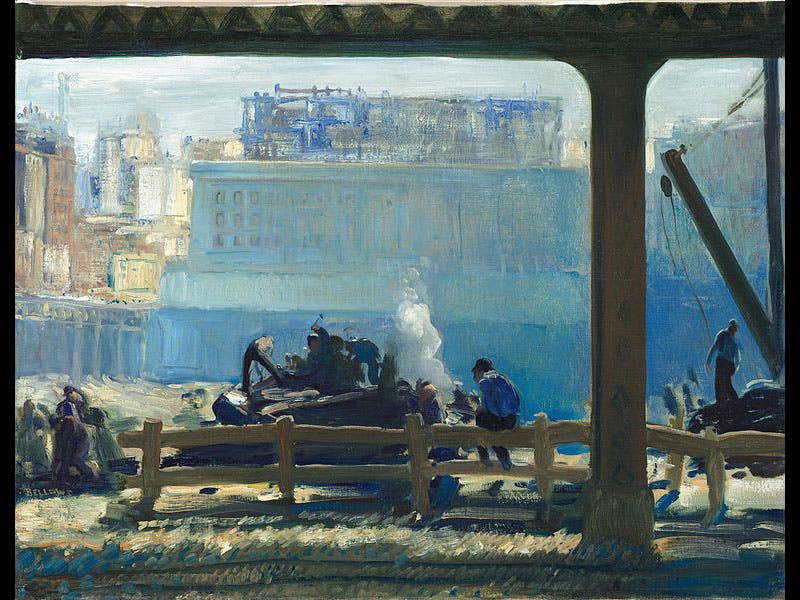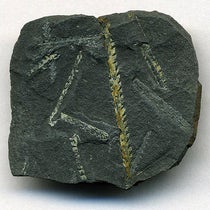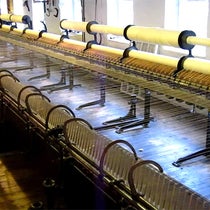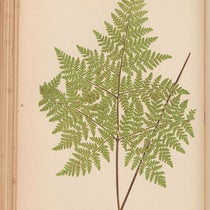Scientist of the Day - George Wesley Bellows
George Wesley Bellows, an American painter, died Jan. 8, 1925, at age 43. Bellows was just 20 years old when Alexander Cassat, president of the Pennsylvania railroad (and brother of painter Mary Cassat), decided it was high time that his trains found a way to get into New York City, rather than terminating in New Jersey on the west bank of the Hudson river. Eight years later there were two long tunnels under the river and a mammoth station, Pennsylvania Station, had arisen on two city blocks between 31st and 33rd street. The project was the largest engineering endeavor ever undertaken in the United States, and most of the labor and expense went into excavating an enormous cavity to allow the tracks from under-river tunnels to connect with the land lines. Bellows arrived in New York from Columbus, Ohio in 1904, when the digging was just underway, and he must have watched this process in awe for several years before deciding to try to capture the digging effort on canvas. He made four paintings of the excavation. The first, called Pennsylvania Excavation (1907), was given to the Smith College Museum of Art a few years ago (second image above). The second, Excavation at Night (1908), is in the Crystal Bridges Museum in Bentonville, Arkansas (first image). The third, Pennsylvania Station Excavation (1907-09), is in the Brooklyn Museum of Art (third image). And the last, Blue Morning, is in the National Gallery of Art (fourth image). The Brooklyn Museum and the Crystal Bridges paintings are the most dramatic, with Excavation at Night impressively so, with the fires and lamplights unable to penetrate the sheer vastness of the audacious hole in the ground.
Bellows is often lumped in with a cadre of New York artists known as the Ashcan School, who were not just realists, but gritty realists, going out of their way to capture the dark and seamy side of big-city life, painting prostitutes, dock-workers, slums, saloons, and prize fights (Bellows himself liked to paint boxers in combat). But what is attractive about the Penn Station series is that Bellows is attempting to capture the process of building and engineering—not the final product. Many artists had painted the finished Brooklyn Bridge or the completed Eiffel Tower, but none of them seem interested in the making of structures—that was left to the photographers. Bellows seems not to have cared about completed buildings. The Pennsylvania Station was one of the seven wonders of the modern world when it was finished in 1910, and Bellows never painted it. He preferred capturing the steaming maw out of which the Station slowly grew. And this was unique in 1907. It makes Bellows our first engineering artist, if by “engineering” you mean the process of construction, and not just the end result.
Dr. William B. Ashworth, Jr., Consultant for the History of Science, Linda Hall Library and Associate Professor, Department of History, University of Missouri-Kansas City. Comments or corrections are welcome; please direct to ashworthw@umkc.edu.

